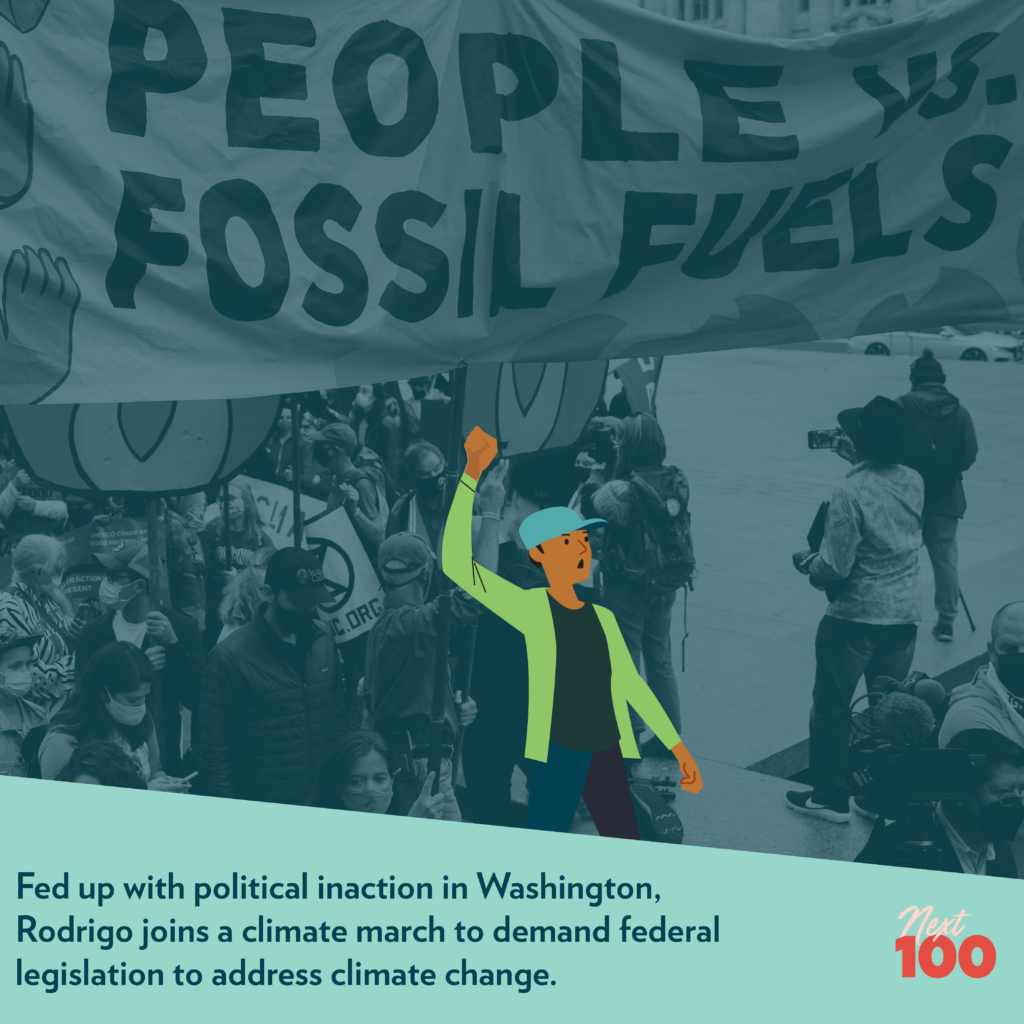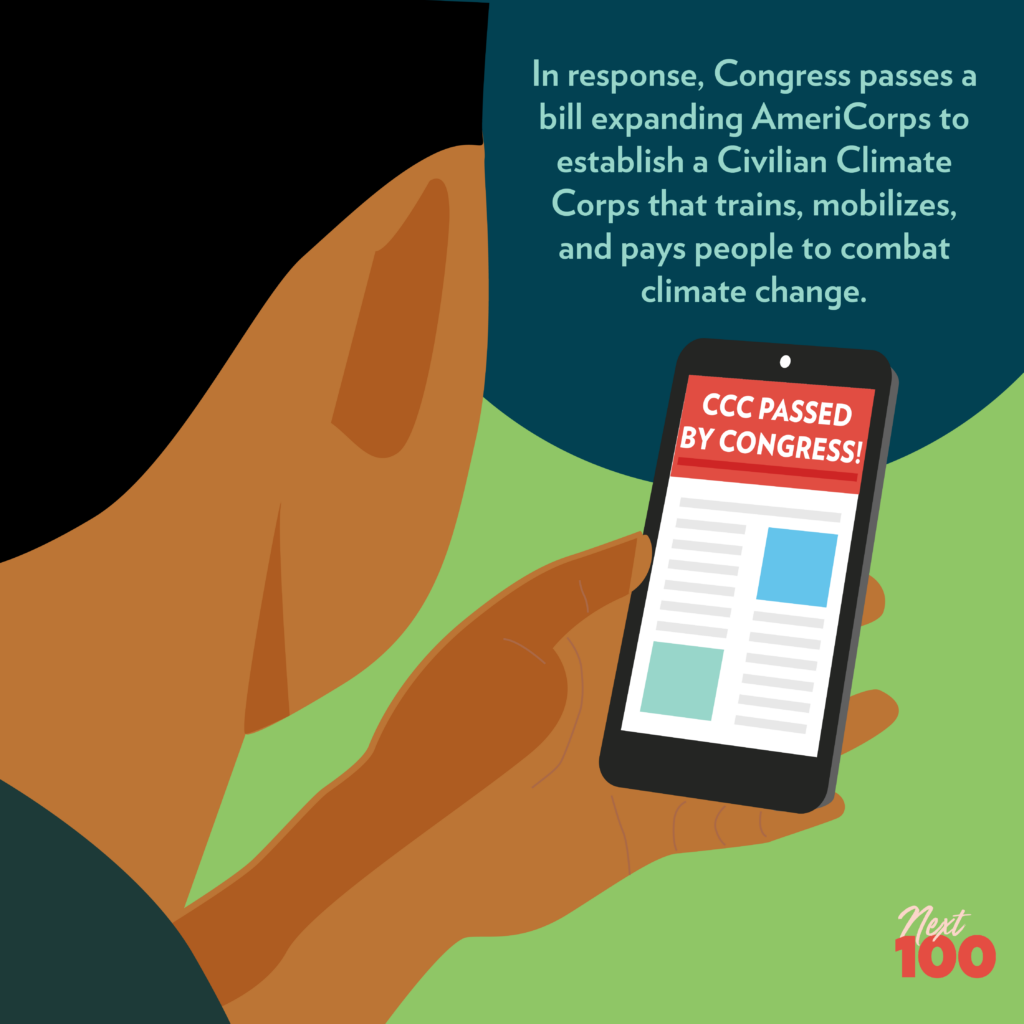An Equitable AmeriCorps Could Tackle the Biggest Problems Facing Our Nation
National service can bring us together to tackle the biggest problems facing our nation—but only if we create a more equitable AmeriCorps that is accessible to all who want to serve.
National service has a long and storied history in the United States. Franklin Roosevelt’s Civilian Conservation Corps (CCC) paid millions of unemployed men to build the nation’s national parks during the Great Depression, while Lyndon Johnson’s VISTA (Volunteers in Service to America) created opportunities for thousands of Americans while fighting poverty in the United States. Service has a long tradition of bringing together Americans from different backgrounds behind a common goal: to combat the greatest problems facing our nation. The legacy of this national service movement is carried on today by the AmeriCorps program.
AmeriCorps does work of tremendous importance for our communities—but it has only reached a fraction of its potential. Our nation is faced with the competing crises of a raging pandemic, climate catastrophes, and skyrocketing inequality. These emergencies call for a solution of dramatic proportions that mobilizes spirited young people to take action to fight back against these problems. However, we must ensure that those who choose to serve are provided adequate compensation, training, and support. Through both my personal experience with AmeriCorps and research on the subject, I have seen both the successes of the current program and where it falls short. Yet, I am confident that if AmeriCorps is restructured to be more equitable and accessible, it can answer this call to action and empower Americans to confront the challenges we face.
Included in this commentary is a fictional graphic series, illustrating a more equitable future for AmeriCorps.

AmeriCorps already does many things right.
AmeriCorps was created in 1993 when President Bill Clinton signed the National and Community Service Trust Act. This act created a new government agency called the Corporation for National and Community Service (CNCS), which was given the mission of motivating civic engagement by providing Americans of all ages and backgrounds the opportunity to serve while tackling the most pressing needs of communities across the United States. CNCS was charged with running AmeriCorps, a new program that paired Americans dedicated to the public interest with nonprofit organizations and local governments to serve their communities in exchange for a living stipend and an education award to help cover college tuition or student loans. Today, AmeriCorps has 75,000 members who serve 40,000 communities across the United States every year. Members perform tasks that range from administering COVID-19 vaccines, to clearing brush to prevent forest fires, to tutoring special needs students in public schools. And since the program requires only a high school diploma, its ranks are filled mostly with young people of diverse backgrounds and educational experiences.
AmeriCorps has proven to have a significant effect on encouraging civic engagement and fostering careers in public service. A 2016 alumni survey found that 91 percent of AmeriCorps alumni were registered to vote before the 2016 election and 94 percent of that population voted. (This is significantly higher than the national average of 58 percent of eligible voters who voted in the 2012 election.) The same survey found that 42 percent of alumni who were employed within six months after their AmeriCorps service said that their employment resulted from a connection to civic duty made during their service. These connections also served as an invaluable pathway into public service: the survey found that almost 40 percent of employed AmeriCorps alumni were working in the nonprofit or social service sector, while just over 33 percent were in the public sector and around 25 percent were in the private sector. (This is in stark contrast to the U.S. average, where 76 percent of American workers are employed in the private sector, 15 percent in the public sector, and only 8 percent in the nonprofit sector.)

However, real issues persist over who has the opportunity to serve in AmeriCorps.
The program simply doesn’t do enough to support its members during or after their service, severely limiting who can afford to participate. The paltry living allowance (which ranges from $15,000 to $30,000 for a full-time year of service) forces these public-minded participants to live on the edge of or below the poverty line. In addition, the education award amounts to only $6,495 (pre-tax), not enough to cover the $10,338 average price tag of just one year of in-state tuition at a public university. A living allowance far below the living wage in most states and a modest education award make it difficult for many without external financial support to participate.
AmeriCorps has significant issues with its hiring and training structures as well. The program requires an onerous background check and proof of citizenship, requirements that keep out many potential applicants. The workforce development training during the program is also often inadequate, and connections to careers after the program are inconsistent, leaving many applicants scrambling to find jobs. Lack of eligibility for benefits such as unemployment insurance only make this transition harder for AmeriCorps members who don’t have a financial cushion to fall back on.
If AmeriCorps is to live up to its original goal of allowing Americans from all backgrounds the opportunity to serve, it must be reformed.

I know firsthand what AmeriCorps can be.
My dedication to improving AmeriCorps stems from my personal experience with the program. I joined AmeriCorps because I wanted to give back to my home state of New York and find my way into a public service career. I served as a tenant organizer in Washington Heights, a predominantly Dominican neighborhood in Upper Manhattan. Tasked with empowering tenants to fight back against housing displacement, I helped community members coordinate their efforts to write to their negligent landlords, file complaints with the city government, and prepare documents for legal action. I also facilitated community events and initiatives to improve park space in the neighborhood. This experience taught me the value of public service and the power of organizing to drive change. However, the meager living stipend never failed to serve as a bitter indication of how little the federal government valued my work.
My dedication to improving AmeriCorps stems from my personal experience with the program. I joined AmeriCorps because I wanted to give back to my home state of New York and find my way into a public service career.
As an AmeriCorps member, I earned roughly $7 an hour, far less than the $15 an hour minimum wage in New York City, and was ineligible for basic benefits such as unemployment insurance or retirement benefits. My previous job as a bartender paid far more and provided more generous benefits. I could afford to serve only because I was able to live at home with my parents rent-free. Just before the end of my service year, I was offered a full-time job with benefits at the non-profit where I was serving. Delighted, I told the staff running the AmeriCorps program and they responded that I would have to leave the program immediately and give up my education award to accept the position. Faced with the decision of forfeiting the offer of full-time employment or completing the program and having to start my job search from scratch, I chose to quit. I left AmeriCorps still believing in the mission of bringing young people of all backgrounds into public service, but was left with the sinking feeling that I was not the only one who had been failed by the program.
Through my experience, I came to understand that AmeriCorps was not living up to the laudable goals set out for it. Instead of providing opportunities for Americans from all backgrounds the chance to serve, it was leaving out many who could not afford to do so. I joined Next100 because I believe that AmeriCorps can meet the grand ambitions laid out for it and wanted to do all I could to make those ambitions a reality. I plan to spend the next two years collaborating with AmeriCorps members and alumni to bring together the best ideas for how to improve the program. I hope to work alongside these members and alumni, as well as national service advocates, state commissions, and program staff, to make the program more equitable and accessible to all who want to serve.

The AmeriCorps program that America deserves is well within reach.
This is an exciting moment for AmeriCorps and public service. The American Rescue Plan (ARP), enacted last year, committed $1 billion to AmeriCorps to support its COVID-19 pandemic response efforts and raise the living allowance. In November, the United States House of Representatives passed the Build Back Better Act, which includes billions of dollars in new funding for AmeriCorps and creates a Civilian Climate Corps. Although this bill is still being negotiated in the Senate, in its current form it would be the largest investment in national service in our history.
This funding presents an opportunity to finally meet the original goals laid out for the program, providing the means for a new vision of AmeriCorps that will meet today’s challenges: a vision where thousands of Americans are paid a living wage with benefits to serve in their communities; where the program provides professional development, skill-building, and career connections into a robust public service community; where AmeriCorps members include everyone from a formerly incarcerated community member re-entering the workplace, to an older employee looking to gain valuable experience necessary to transition into the clean energy industry, to a high school graduate starting their career.
We have the opportunity today to build a more equitable AmeriCorps that can help us respond to the challenges of an ongoing pandemic, a worsening climate crisis, and increasing economic inequality. We should not let it pass by.

